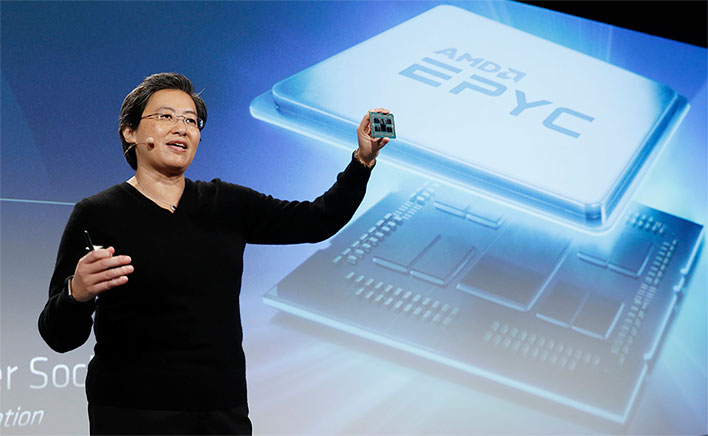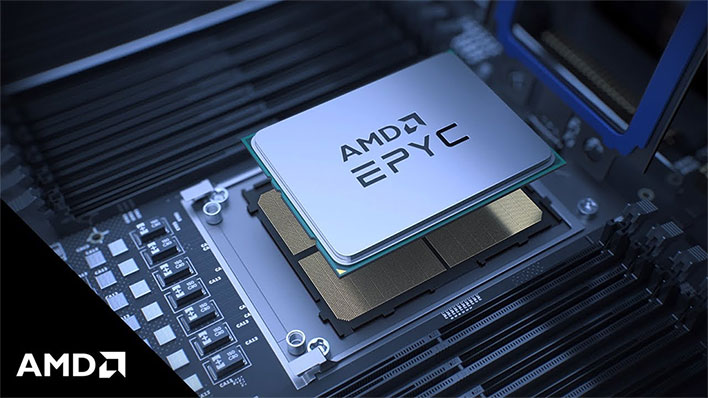AMD EPYC Server CPUs Capture Highest Market Share Gains From Intel In 15 Years
A reinvigorated AMD is making strides across the board, including the high-dollar data center segment where premium sums go towards the top silicon money can buy. Intel has historically dominated data center sales, but it can ill-afford to become lax—AMD just saw its its biggest sequential jump in data center market share in 15 years.
The gain coincides with AMD recently revealing it more than doubled its data center revenue last quarter, which contributed to a strong three-month period that saw AMD rake in $3.4 billion in revenue, a gain of 93 percent compared to the same quarter a year ago. Its net income, meanwhile, grew 94 percent year-over-year to $555 million during the first quarter of 2021.
"We had outstanding year-over-year revenue growth across all of our businesses and data center revenue more than doubled. Our increased full-year guidance highlights the strong growth we expect across our business based on increasing adoption of our high-performance computing products and expanding customer relationships," AMD CEO Dr. Lisa Su said in a statement last month.
The claim is in line with the latest x86 CPU market share report by Mercury Research, according to CRN, which noted AMD's server chip share grew 1.8 points to 8.9 percent. Looking at the full year gain, AMD's share of the data center market grew 3.8 points. Market Research president Dean McCarron said AMD's Q1 gain in data center CPU market share is the fastest since Q2 2006.
AMD actually sold more server CPUs in the second quarter of 2006 than it did during the first quarter of 2021 (or any other quarter, actually). But armed with its Zen architecture, AMD these days is selling processors at a higher price and selling fewer lower end chips.
"This explains how AMD reported in its earnings that it had record server and client revenues, even though units were down in client and server units are from from the compmany's record shipments 15 years ago," McCarron said.
As we have said before, this should concern Intel. Looking back at the second quarter of 2006, when AMD set a personal record for server CPU shipments, it had went from around 5-7 percent to 22 percent in just 18 months, driven by its 64-bit Opteron silicon. But over the next decade, AMD's share of the server market declined while Intel's grew, for the most part. Until now.
It would be a mistake for Intel to assume the same scenario will play out. Dr. Su has proven she is the right person to lead AMD into a new era of computing, and this is very much a different version of the company than the one we used to write about a decade and a half ago.
Looking ahead, there is reason to believe AMD will continue chipping away at Intel's dominating share of the data center market. It has been less than two months since AMD ported its Zen 3 architecture over to its big iron processors with the EPYC 7003 series (Milan), in up to 64-core/128-thread configurations. At the moment, AMD boasts a significant per-socket density advantage over competitive Xeon solutions.
Intel is not standing pat, though. It plans to launch its Sapphire Rapids Xeon lineup, which are rumored to arrive in up to 56-core/112-thread configurations. Or perhaps even higher—a leaked engineering sample was recently stripped to its bare metal to expose a theoretical maximum 80-core/160-thread configuration.
Whether something like that actually materializes or not remains to be seen. Either way, Intel has a real fight on its hands with AMD's current-generation EPYC lineup.




